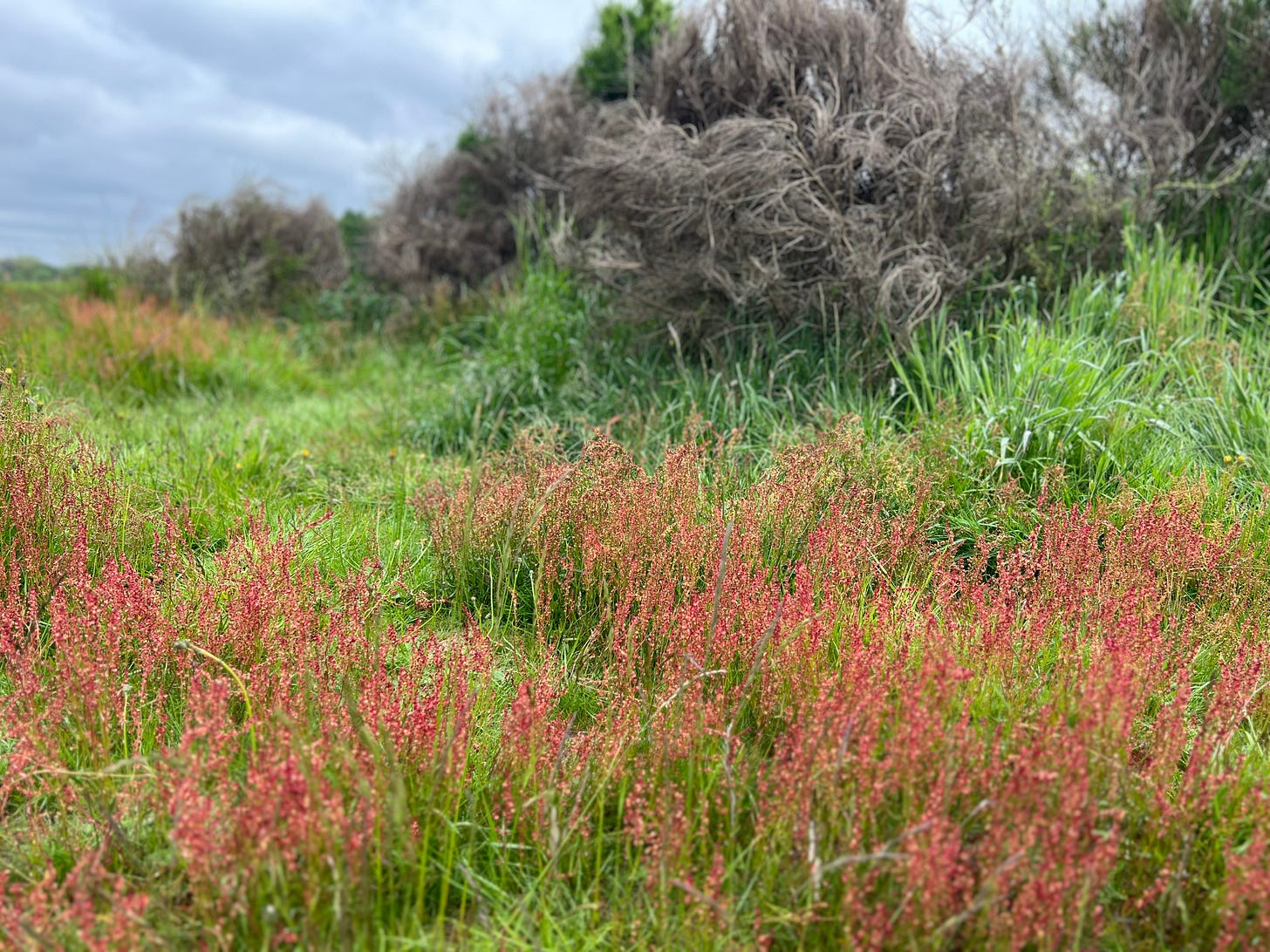NOTES from. the plant kingdom // sheep's sorrel
Every year there's a prevailing plant on Wanstead Flats – often it's yarrow, this year it's sheep's sorrel, creating swathes of low-lying, rust-coloured flowers across the acid grassland.
Sheep’s sorrel is always in abundance on Wanstead Flats but this year it seems to be a much more painterly affair with swashes of red ochre between low-mown football pitches and taller acid grassland. The pinky-rust colour comes from the female flowers that bloom between May and August and and then similarly hued fruits. The male flowers, green-golden in colour, reside on separate plants as is the dioecious nature of Rumex acetosella, with long thin spear-shaped leaves with pointed lobes at the base creating a visual connection between the two.
Under the ground, far-reaching rhizomes allow this wandering, wind-pollinated plant to proliferate across large areas of land, with the acid soils of Wanstead Flats providing ideal conditions for a bumper crop. A member of the buckwheat family Polygonaceae, relatives include members of the Eriogonum genus, to which the medicinal and drought-tolerant Californian buckwheat (Eriogonum fasciculatum) belongs plus closer cousins in the Rumex genus. This includes common sorrel (Rumex acetosa), broad-leaved dock (Rumex obtusifolius) and French sorrel (Rumex scutatus), all of which have medicinal and culinary uses.
Common sorrel (also known as narrow-leaved dock) is traditionally eaten in soups and salads, picking the young tender leaves as the mature ones become too tough. It also grows on acid grasslands. The larger foliage of broad-leaved dock were historically used to wrap butter, but are more commonly known as an antidote to the stings of nettles, which often grow nearby. French sorrel has a much daintier, shield-shaped leaf and is lovely as a lemony garnish or just to nibble on fresh from the herb garden. The common ingredient is oxalic acid (also found in rhubarb leaves and spinach) which resides in the leaves in varying quantities, and gives each plant a tart taste. This is fine in small quantities but avoid consuming large amounts as oxalic acid can combine with calcium in the body to create calcium oxalate, which can lead to kidney stones. This binding habit also leads to the absorption of calcium being blocked.
Sheep’s sorrel also has medicinal and culinary properties, with particularly high levels of vitamin C, useful in the prevention of scurvy. It can also be used as a tart flavouring agent or to help curdle milk when making cheese. Although I won’t be making cheese in the near future, I do like having a little nibble on the leaves from time to time. Plus it’s a great herb to show the kids at school in comparison to the rhubarb and the French sorrel we have growing in the garden there.
It’s also a great plant for wildlife, being a favourite caterpillar food and breeding ground of the small copper butterfly and the day-flying forester moth. Survival food for all.




